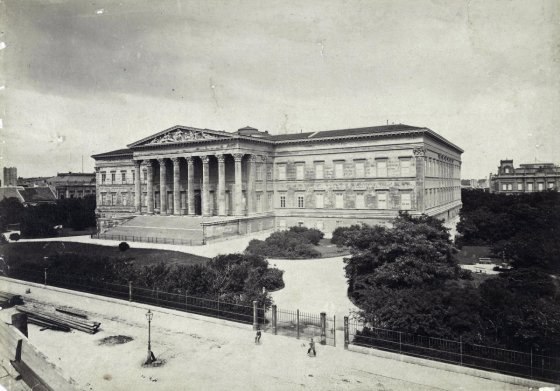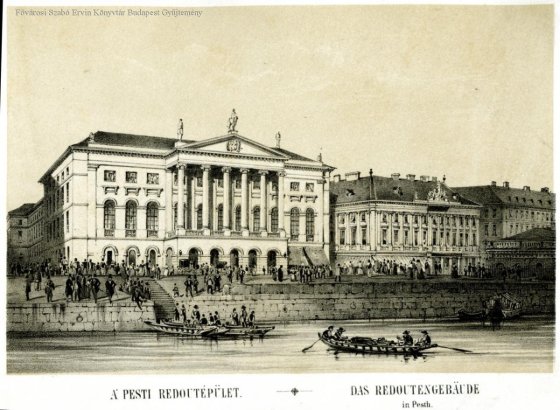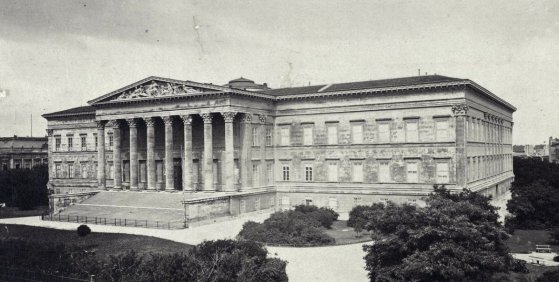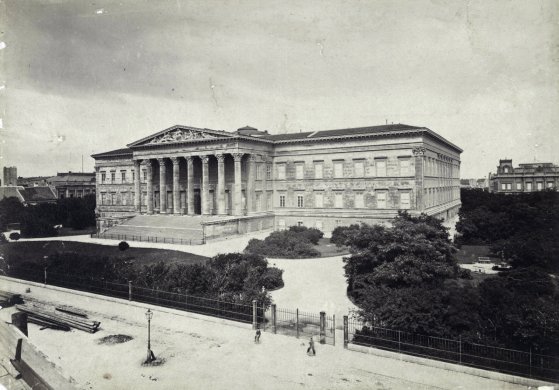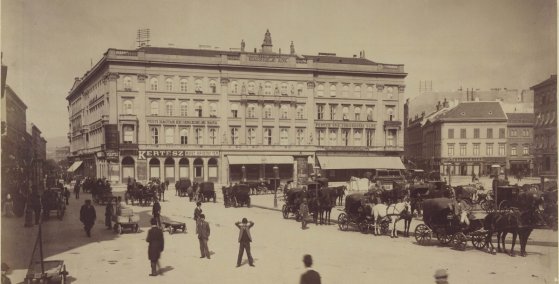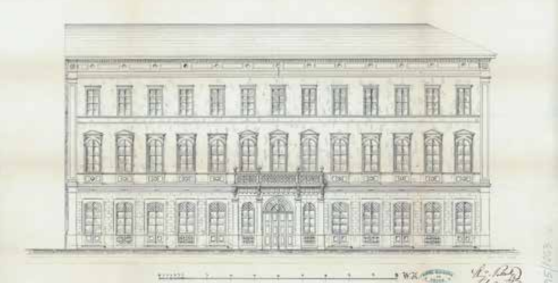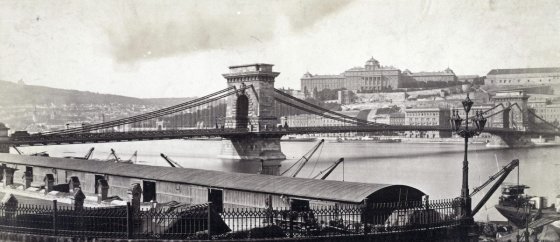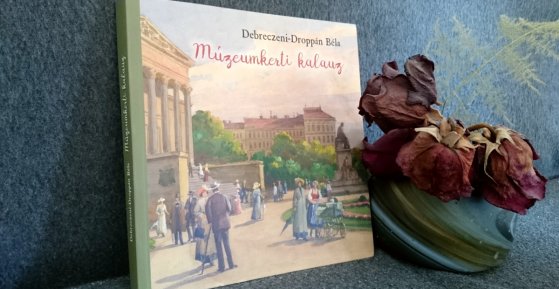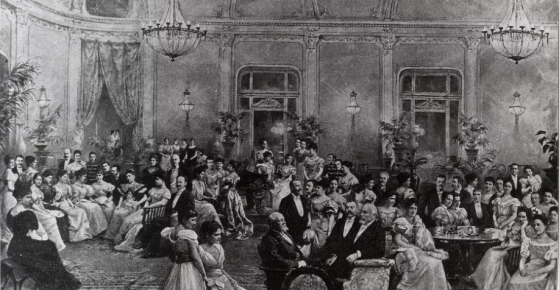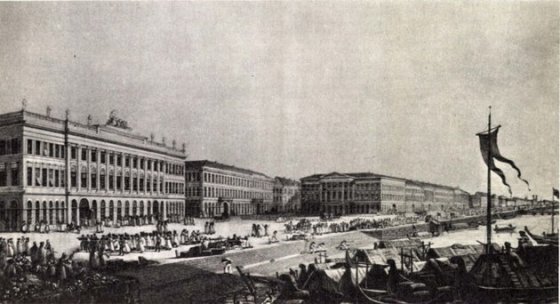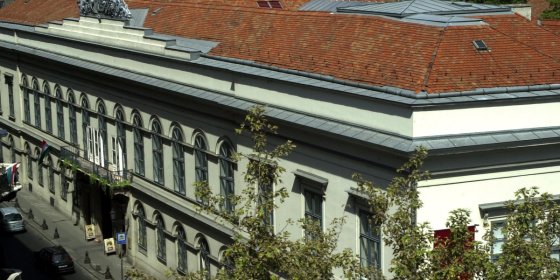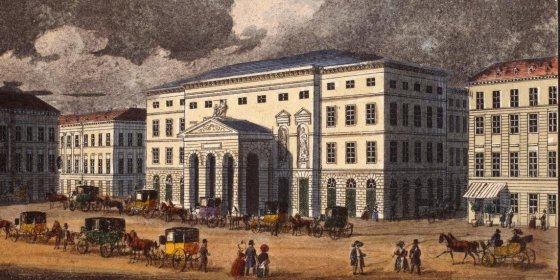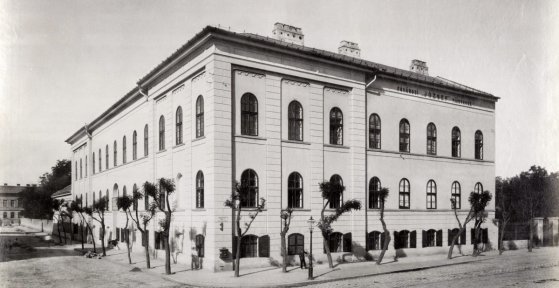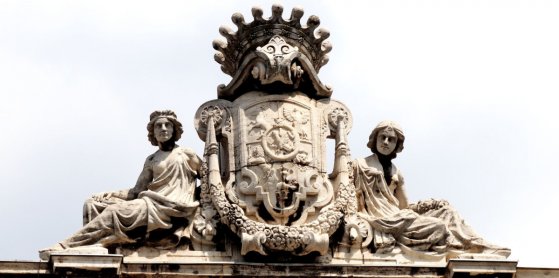 The „intertwined history” of the bridges and the city of Budapest
Which ideas and events have shaped the fate of bridges of Budapest and the cityscape? Alongside many other interesting facts, this question is also answered this newly published book by the Budapest City Archives, which introduces the history of bridges in Budapest.
The „intertwined history” of the bridges and the city of Budapest
Which ideas and events have shaped the fate of bridges of Budapest and the cityscape? Alongside many other interesting facts, this question is also answered this newly published book by the Budapest City Archives, which introduces the history of bridges in Budapest.
Mihály Pollack
 Imre Madách, born 200 years ago, became a writer in Pest
Imre Madách, born 200 years ago, became a writer in Pest
January 28, 2023 at 9:00 AM
The young Imre Madách lived in Pest for three years. While completing his law studies at the University of Pest, he also got involved in social and cultural life. He regularly visited the performances of the Hungarian Theatre of Pest, attended concerts at the National Casino, but the highly educated young man also learned to paint, fence, and play the piano in the capital. His first volume was published here. Pestbuda remembers Imre Madách, who was born 200 years ago.
It became the most important work of classicist architecture: the new National Museum opened its doors to the public 175 years ago
January 24, 2023 at 5:00 PM
When the country's most important classicist building, the National Museum designed by Mihály Pollack, was completed in 1847, it took time to properly house the artefacts and books collected over the decades and to create the exhibition spaces. The classicist palace opened to the public 175 years ago, on 24 January 1848, but at that time no one thought that in less than two months the building would become the scene of events that would make it a national symbol forever.
In the wake of the disappeared Redoute - Pest's first place for merriment existed for only 16 years
January 17, 2023 at 11:00 AM
At the beginning of the 19th century, the dynamically developing city of Pest desperately needed an elegant ballroom in which high-quality dance parties could be held that met the needs of the high-class audience. The first site in the capital that was built for this purpose was the Redoute, the predecessor of today's Vigadó of Pest, but the classicist palace, handed over 190 years ago, on 13 January 1833, decorated the Danube bank of Pest for only 16 years.
The Ludovica Academy: 150 years of Hungarian officer training
December 4, 2022 at 11:00 AM
One hundred and fifty years ago, in 1872, the Ludovica Academy, the military school for the training of officer cadets, was opened. The 1808 Diet decided to start Hungarian officer training, but the education actually started only 64 years later. The academy's own building in the 8th District was already built between 1830 and 1836 from public donations, according to the plans of Mihály Pollack, but the classicist palace was unused for decades. However, a law of 1872 once again ordered the establishment of the Hungarian Royal Hungarian Defense Academy.
Interior transformation of the National Museum - The building was also expanded with a hidden floor
July 29, 2022 at 9:00 AM
The Hungarian National Museum is one of the iconic buildings of our country, so since it was handed over in 1847, attention has been paid to its condition. By the beginning of the 20th century, however, its collection had already grown to such an extent that excessive crowding made its operation impossible. Some of the preserved material was transported to other buildings, and then in 1926, its large-scale restoration began, during which a hidden, third floor was also created in 1927 - ninety-five years ago.
The construction of the National Museum began in 185 years
June 24, 2022 at 2:00 PM
The construction of the Hungarian National Museum began 185 years ago. Alfalfa was previously grown on the then suburban plot, which had already been purchased for the museum in 1813. The Parliament voted for a huge amount of 500,000 HUF for the construction, and it began on 22 June 1837.
From Customs House to Gerbeaud Confectionery - 240-year history of a legendary plot
June 20, 2022 at 11:00 AM
Between today's Vörösmarty Square and József Nádor Square, on the site of the Gerbeaud confectionery and its surroundings, there was a very valuable plot. 240 years ago, the Thirtieth Office (Customs House) was built here, which was considered old-fashioned and demolished after 70 years. After that, several people wanted to use the area: Count István Széchenyi would have built the National Casino, the city of Pest would have built the new town hall on the site. The plot was finally divided into four parts in the 19th century. The houses built here still stand today, valuable pieces of the architectural heritage of the inner city.
Ágoston Pollack, born 215 years ago on this day, created in the shadow of his father
June 9, 2022 at 9:00 AM
Ágoston Pollack, the son of the outstanding classicist architect, Mihály Pollack, designed several public and private buildings in Pest and Buda. Most of it has been demolished and rebuilt, many of his plans have survived only in the form of documentation. Ágoston Pollack also collaborated with Miklós Ybl and his own father, for example on the expansion of Szent Rókus Hospital. Ágoston Pollack's activity and appreciation were relegated to the background in the shadow of his father's masterpieces, although at the sight of his plans we can say that he was one of the outstanding architects of his time.
Before the big changes - Budapest at the time of the compromise
May 2, 2022 at 11:00 AM
The Austro-Hungarian Compromise, established in 1867, ushered in one of Hungary's heyday. Under the Compromise of 155 years ago, a dual system was created - hence our common word dualism, which is used to characterise the period up to 1918. This upswing has brought about great changes: as a result of industrialisation, more and more people have moved to the cities, and the population of Budapest has grown exponentially. But what was the capital like in the second half of the 1860s?
The garden of revolution and love - A Museum Garden Guide from a new angle
April 24, 2022 at 7:00 PM
One of the most charming open-air venues in the city centre is the Museum Garden, which once again shines in its full splendour: looking at its sculptures and memorial plaques, or relaxing on one of the museum’s steps and benches, can reminds us of the rich past of this special historical site. This extraordinary richness is illustrated by a gap-filling publication, the Museum Garden Guide, which - worthy of its title - guides us through the garden, recalling the events of the past, with many surprises in store for the reader.
Studio in the Inner City - The Strelisky photographer dynasty in Budapest
April 20, 2022 at 10:00 AM
Lipót Strelisky was one of the first to deal with daguerreotypes in Budapest in the 1840s. In his studio in Dorottya Street, he photographed the politicians, aristocrats and artists of the age. His son, Sándor Strelisky, who died a hundred years ago, was the first photographer in Hungary to take multi-character photographs with a special technique. Strelisky photos are invaluable today and help us learn about Budapest's past.
An impressively rich oeuvre of an architect - József Hild died 155 years ago
March 7, 2022 at 10:00 AM
One of the most famous figures of Hungary in the 16th century was József Hild. He fully deserved his reputation, as the cityscape of Pest, which was booming, was largely determined by his work. However, the unbroken development also caused the destruction of most of his works: many of his inner city buildings were demolished to give way to newer and bigger ones. Fortunately, some of his buildings still stand today and promote the talent of their designer.
The interiors of Károlyi Palace are being renovated
February 27, 2022 at 7:00 PM
The interiors of the Károlyi Palace in the 5th district, which has housed the Petőfi Literary Museum for sixty-five years, are being renovated. The restoration affects a listed one-storey, classicist building of about 1,730 square meters. As part of this, they will improve public traffic, restore the ornate gate, restore and expand the exhibition spaces, and make the building accessible. In 2000, during the complete renovation of the palace, the architecture that was finalized in the first half of the twentieth century being reversed. The palace is expected to be completed in the fall of 2022.
The German Theatre in Pest, once the largest theatre in the city, burned down 175 years ago
February 4, 2022 at 9:00 AM
The side of today's Vörösmarty Square facing the Danube has been lined with many buildings over the past 200 years, the first being the German Theatre in Pest [Pesti Német Színház], which was handed over in 1812. Although excellent Hungarian artists of the time also performed in the huge building, which could accommodate 3,500 spectators, such as Déryné and its second conductor was Ferenc Erkel himself, however, the theater could only be used for 35 years, as it burned down on 2 February 1847.
Once upon a time there was a boy's orphanage - Josephinum designed by Mihály Pollack got its name from Palatine Joseph¬
October 10, 2021 at 10:00 AM
The support and upbringing of young children who lost their parents, and the satisfaction of their daily needs in Hungary until the middle of the 18th century was undertaken by the churches. The first city orphanage opened in Kőszeg in 1741, and then in the following decades similar institutions maintained and operated by the settlements were built in Selmecbánya [today Banská Štiavnica], Sopron, Nagyszombat [today Trnava] and Veszprém. In Pest, although prominent citizens donated significant sums for this purpose in the 1790s, only 100 years after the opening of the one in Kőszeg was the foundation stone of the first educational institution of this type laid, and it named after Palatine Joseph.
Lion, sparrowhawk, crane – Ancient symbols from coats of arms tell the story of the past of noble families in the Magnates' Quarter
June 17, 2021 at 9:30 AM
Although in 1947, the communist regime banned the use of noble forenames and badges, including private coats of arms, fortunately, these were not removed from the former aristocratic palaces. Ancient symbols, often dating back centuries, referred to the owner's family, their role in Hungarian history and also served aesthetic purposes on the buildings. In the second half of the 19th century, the Hungarian aristocracy enjoyed building around the National Museum, so several buildings with family coats of arms and their motifs can be found in the quarter. These can be seen in the palaces of the Festetics and Károlyi families in Pollack Mihály Square.
Synagogue of Óbuda stands as testament to Hungarian Classicism
December 15, 2020 at 9:00 AM
The Óbuda Synagogue is one of the most important historical monuments of the 3rd District and is extremely valuable within Budapest as a whole as well. Nevertheless, it is less well known than its stunning counterparts in Pest, the Dohány Street and Kazinczy Street Synagogues, despite being an immense example of not only synagogue architecture, but also of Hungarian classicist architecture.
More articles
 The „intertwined history” of the bridges and the city of Budapest
Which ideas and events have shaped the fate of bridges of Budapest and the cityscape? Alongside many other interesting facts, this question is also answered this newly published book by the Budapest City Archives, which introduces the history of bridges in Budapest.
The „intertwined history” of the bridges and the city of Budapest
Which ideas and events have shaped the fate of bridges of Budapest and the cityscape? Alongside many other interesting facts, this question is also answered this newly published book by the Budapest City Archives, which introduces the history of bridges in Budapest.
 The Bridge Report, which brought a turning point in the history of Budapest
A travel report that changed the history of Pest and Buda, as well as Hungary. The little book contributed to the change of half a thousand years of legal customs and the implementation of an investment of unprecedented size and technical quality. This book was The Bridge Report [Hídjelentés in Hungarian].
The Bridge Report, which brought a turning point in the history of Budapest
A travel report that changed the history of Pest and Buda, as well as Hungary. The little book contributed to the change of half a thousand years of legal customs and the implementation of an investment of unprecedented size and technical quality. This book was The Bridge Report [Hídjelentés in Hungarian].
 Drama on the university wall - The heroic monument was planned 95 years ago
In the constant hustle and bustle of the Egyetem Square in Pest, the students may not even notice the monument that decorates the short section of wall between the church and the central building of ELTE. However, it commemorates their predecessors, the heroes who fought for their country in World War I, and those who heroically helped them. The first design of the dramatically collapsing soldier was born in 1928, ninety-five years ago.
Drama on the university wall - The heroic monument was planned 95 years ago
In the constant hustle and bustle of the Egyetem Square in Pest, the students may not even notice the monument that decorates the short section of wall between the church and the central building of ELTE. However, it commemorates their predecessors, the heroes who fought for their country in World War I, and those who heroically helped them. The first design of the dramatically collapsing soldier was born in 1928, ninety-five years ago.

